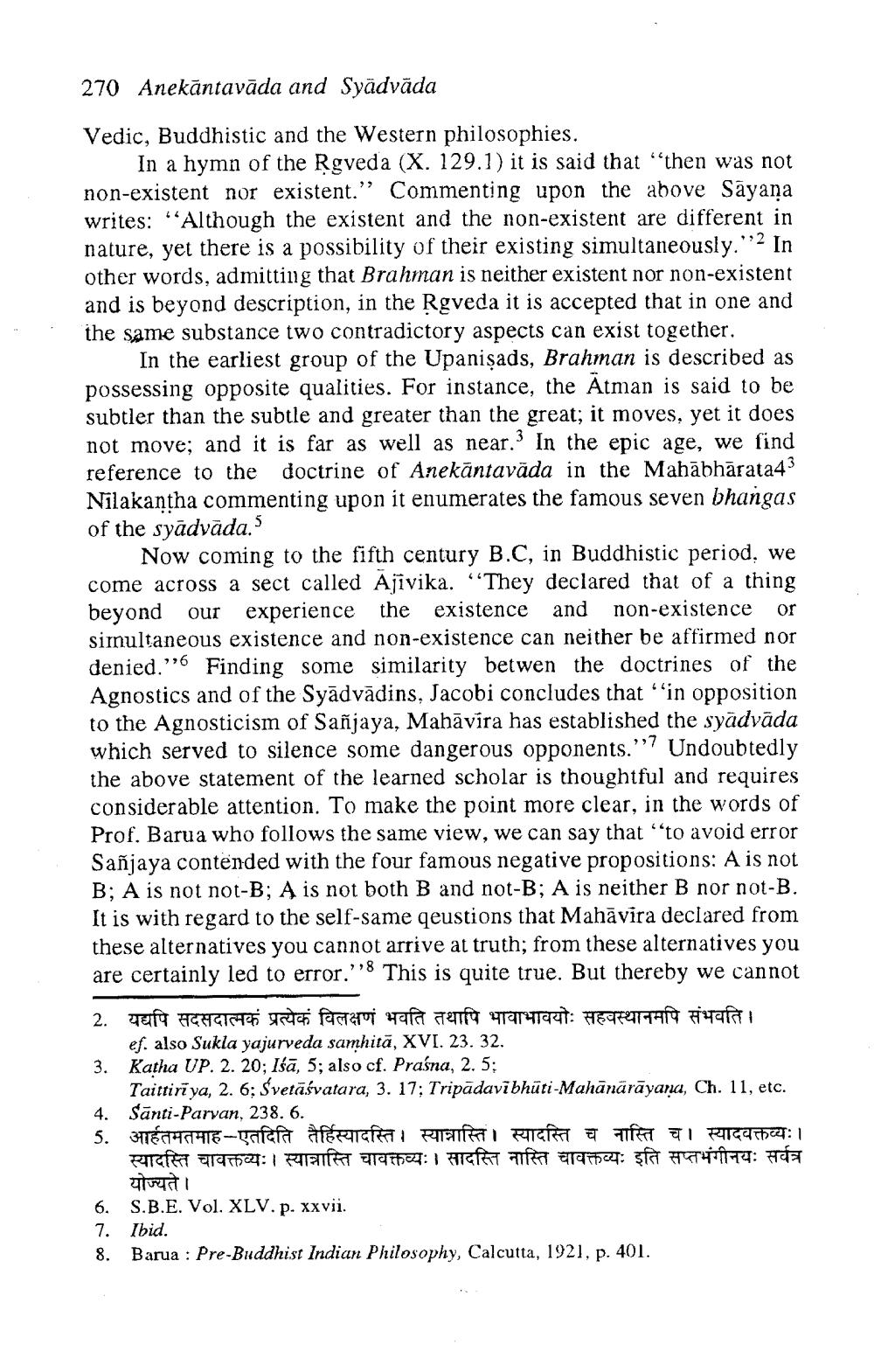________________
270 Anekāntavāda and Syädväda
Vedic, Buddhistic and the Western philosophies.
In a hymn of the Rgveda (X. 129.1) it is said that then was not non-existent nor existent." Commenting upon the above Sāyana writes: “Although the existent and the non-existent are different in nature, yet there is a possibility of their existing simultaneously."?? In other words, admitting that Brahman is neither existent nor non-existent and is beyond description, in the Rgveda it is accepted that in one and the same substance two contradictory aspects can exist together.
In the earliest group of the Upanișads, Brahman is described as possessing opposite qualities. For instance, the Atman is said to be subtler than the subtle and greater than the great; it moves, yet it does not move; and it is far as well as near. In the epic age, we find reference to the doctrine of Anekāntavāda in the Mahābhārata43 Nilakantha commenting upon it enumerates the famous seven bhangas of the syādvāda."
Now coming to the fifth century B.C, in Buddhistic period, we come across a sect called Ajivika. “They declared that of a thing beyond our experience the existence and non-existence or simultaneous existence and non-existence can neither be affirmed nor denied." Finding some similarity betwen the doctrines of the Agnostics and of the Syādvādins, Jacobi concludes that ''in opposition to the Agnosticism of Sañjaya, Mahāvíra has established the syādvāda which served to silence some dangerous opponents." Undoubtedly the above statement of the learned scholar is thoughtful and requires considerable attention. To make the point more clear, in the words of Prof. Barua who follows the same view, we can say that “to avoid error Sañjaya contended with the four famous negative propositions: A is not B; A is not not-B; A is not both B and not-B; A is neither B nor not-B. It is with regard to the self-same qeustions that Mahāvira declared from these alternatives you cannot arrive at truth; from these alternatives you are certainly led to error.''8 This is quite true. But thereby we cannot
2. यद्यपि सदसदात्मकं प्रत्येक विलक्षणं भवति तथापि भावाभावयोः सहवस्थानमपि संभवति।
ef. also Sukla yajurveda samhitā, XVI. 23. 32. 3. Katha UP. 2. 20; Išā, 5; also cf. Praśna, 2.5;
Taittirīya, 2. 6: Svetāśvatara, 3. 17; Tripādavibhūti-Mahānārāyana, Ch. 11, etc. 4. Santi-Parvan, 238. 6. 5. आर्हतमतमाह-एतदिति तैर्हिस्यादस्ति। स्यान्नास्ति। स्यादस्ति च नास्ति च। स्यादवक्तव्यः।
स्यादस्ति चावक्तव्यः। स्यानास्ति चावक्तव्यः। सादस्ति नास्ति चावक्तव्यः इति सप्तभंगीनयः सर्वत्र योज्यते।
S.B.E. Vol. XLV. p. xxvii. 7. Ibid.
Barua : Pre-Buddhist Indian Philosophy, Calcutta, 1921, p. 401.




